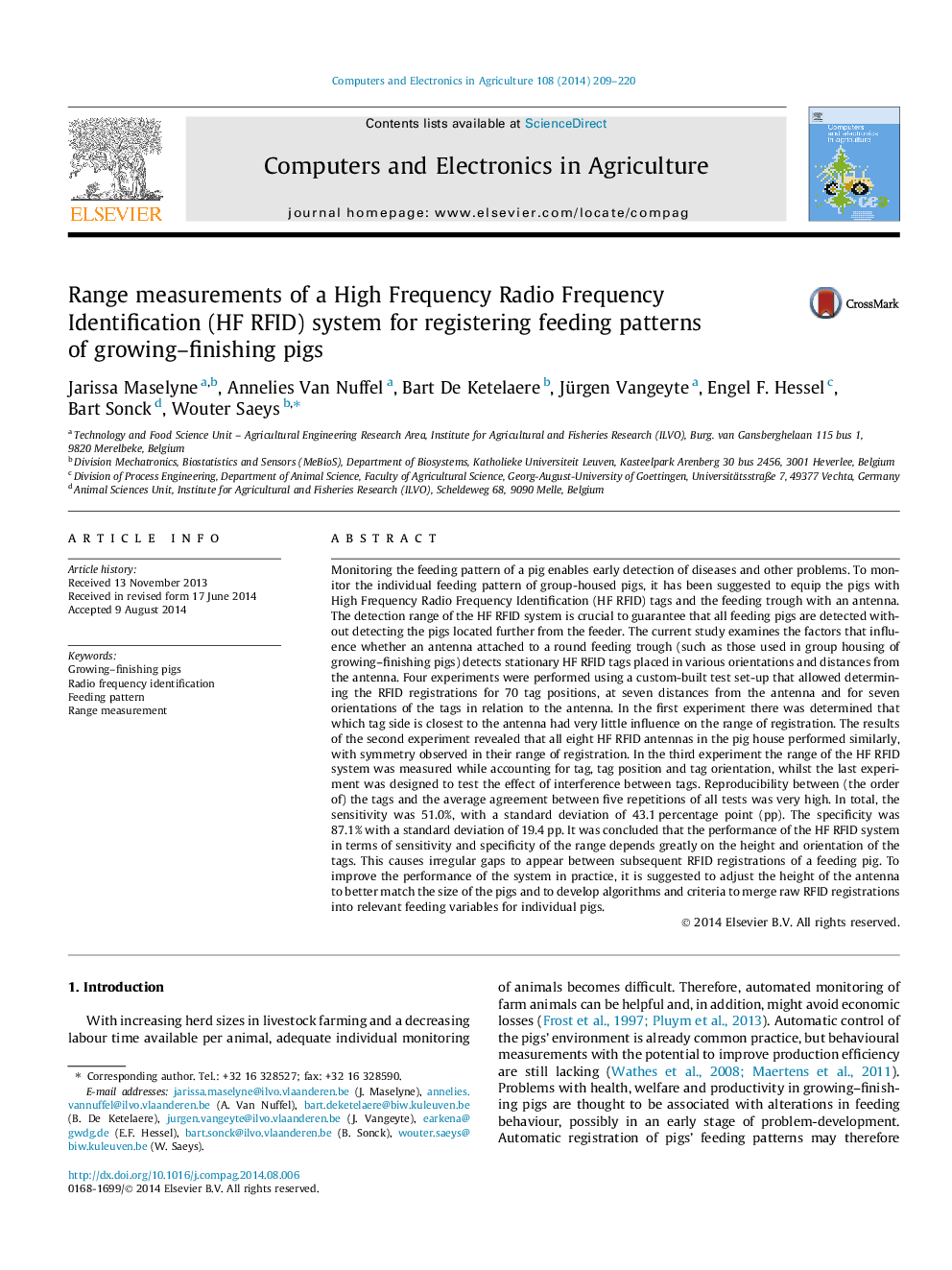| کد مقاله | کد نشریه | سال انتشار | مقاله انگلیسی | نسخه تمام متن |
|---|---|---|---|---|
| 84276 | 158871 | 2014 | 12 صفحه PDF | دانلود رایگان |

• Range measurements were performed on a HF RFID system for registering feeding pigs.
• Factors influencing the range of the system were tested in situ.
• Tag, tag side, antenna and antenna quadrant were found to have little or no effect.
• Tag position and orientation did have a large influence.
• Further work is needed to cluster RFID registrations and obtain feeding patterns.
Monitoring the feeding pattern of a pig enables early detection of diseases and other problems. To monitor the individual feeding pattern of group-housed pigs, it has been suggested to equip the pigs with High Frequency Radio Frequency Identification (HF RFID) tags and the feeding trough with an antenna. The detection range of the HF RFID system is crucial to guarantee that all feeding pigs are detected without detecting the pigs located further from the feeder. The current study examines the factors that influence whether an antenna attached to a round feeding trough (such as those used in group housing of growing–finishing pigs) detects stationary HF RFID tags placed in various orientations and distances from the antenna. Four experiments were performed using a custom-built test set-up that allowed determining the RFID registrations for 70 tag positions, at seven distances from the antenna and for seven orientations of the tags in relation to the antenna. In the first experiment there was determined that which tag side is closest to the antenna had very little influence on the range of registration. The results of the second experiment revealed that all eight HF RFID antennas in the pig house performed similarly, with symmetry observed in their range of registration. In the third experiment the range of the HF RFID system was measured while accounting for tag, tag position and tag orientation, whilst the last experiment was designed to test the effect of interference between tags. Reproducibility between (the order of) the tags and the average agreement between five repetitions of all tests was very high. In total, the sensitivity was 51.0%, with a standard deviation of 43.1 percentage point (pp). The specificity was 87.1% with a standard deviation of 19.4 pp. It was concluded that the performance of the HF RFID system in terms of sensitivity and specificity of the range depends greatly on the height and orientation of the tags. This causes irregular gaps to appear between subsequent RFID registrations of a feeding pig. To improve the performance of the system in practice, it is suggested to adjust the height of the antenna to better match the size of the pigs and to develop algorithms and criteria to merge raw RFID registrations into relevant feeding variables for individual pigs.
Journal: Computers and Electronics in Agriculture - Volume 108, October 2014, Pages 209–220